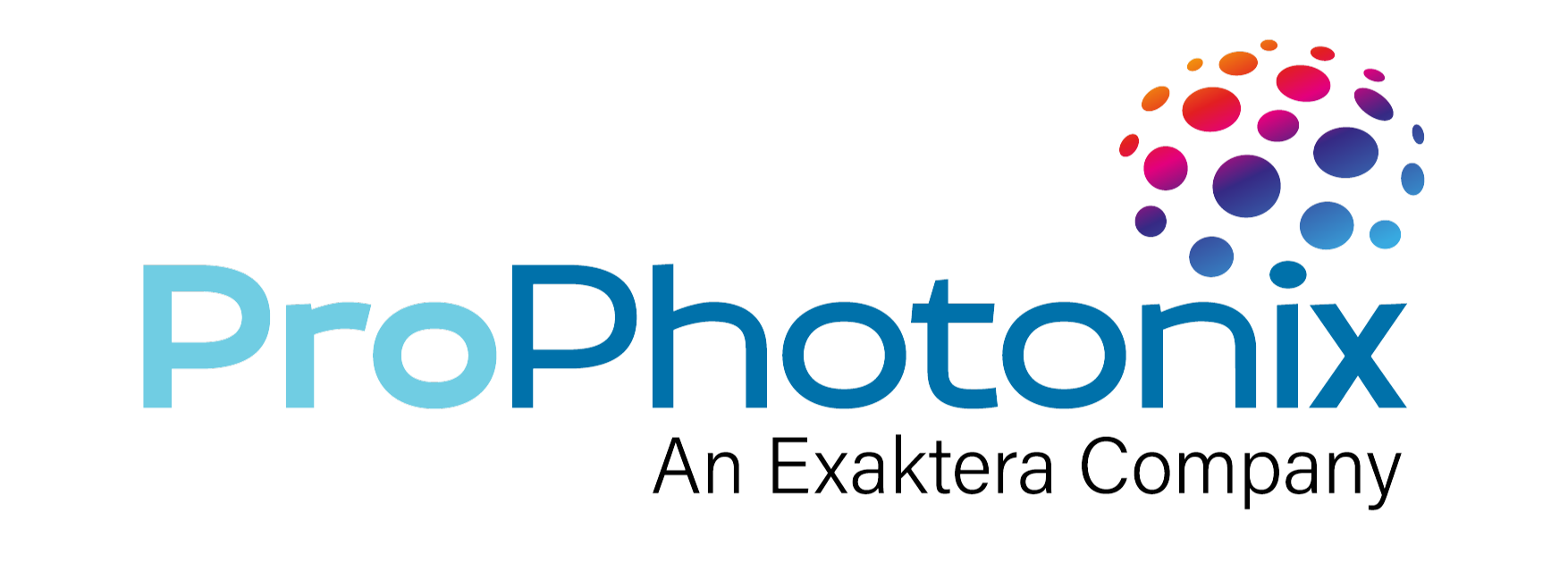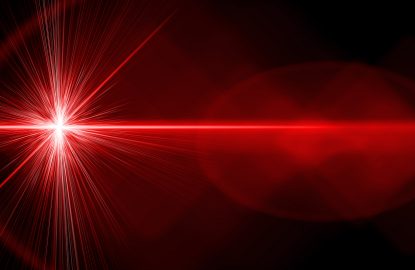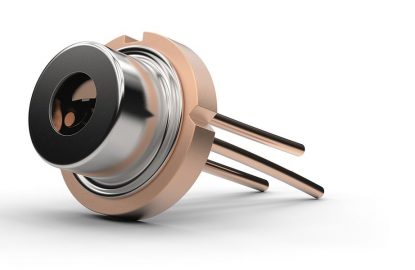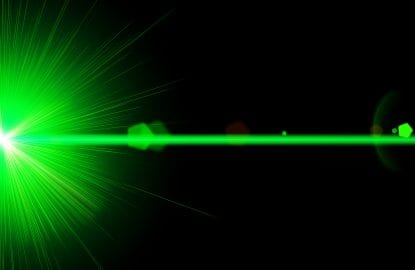While there are many off-the-shelf laser modules available today, most applications have unique requirements that can be better met with a custom laser module. When developing a custom laser solution, there are numerous optical, mechanical, and electronic decisions to make. On the optical side, customers often have detailed specifications for wavelength and power requirements, which will impact diode selection. However, optical expertise is required to determine the optical characteristics that will determine the choice of other components in the laser module such as the lenses. Let’s explore the key optical requirements impacting lens selection.
Determining the Optimal Optical Configuration for Shaping Laser Beams with Lenses
Edge-emitting laser diodes naturally emit elliptical-shaped beams that generally change with increasing distance from the laser diode. This type of beam is fine to use in basic alignment applications that just need a beam pointing in a specific direction. However, an elliptical beam is not ideal for many applications. Beyond this natural elliptical shape, laser beams can be shaped into three different configurations – circular beams, line generating lasers, or patterned beams by using a combination of optics and appropriate lenses.
Circular Beams
Circular beams are needed for applications such as X-ray digitization and 3D scanning where a laser is used to scan a surface and rotating mirrors may be used to steer the beam. The beam is being twisted as it moves, but because it is circular, it will not be distorted as it is twisted or if the mirror is angled. The circular beam is created using correcting optics that turn the elliptical beam into a beam that is the same size and shape no matter what the angle of the mirror is or how the beam is turned.
Line Generating Lasers
For applications that need a line generating laser, there are a variety of characteristics to consider such as the thickness and uniformity of the line and how far that line needs to extend at that thickness and uniformity. It takes two or more lenses to shape the beam into the appropriate line. The first lens will shape the output, or cone of light, from the laser diode down to the parameters that the line lens will need.
The second lens is the line-generating lens. There are several types of line-generating lenses that can be used depending on the uniformity required, and two of the most common are discussed below. A cylindrical lens will produce a line that is brighter and thicker at the center, tapering towards the ends with a Gaussian intensity distribution (Figure 1). This lens produces a line that is acceptable for applications such as alignment in CT scanners to make sure the patient is in the right position but is not as uniform as may be required in more demanding applications.

Figure 1. An example of a Gaussian output from a cylindrical lens.
For higher-quality beams, a Powell lens can be used to generate a very uniform beam – a structured light laser. A Powell lens resembles a round prism with a two-dimensional aspheric element on its apex. The output line from a Powell lens has a more uniform distribution of energy, creating an optically efficient uniform line (Figure 2). This is achieved when the laser beam hits the apex causing spherical aberrations, which redistributes the light such that it decreases the light in the central area of the line while increasing the light intensity at the ends of the line.
Figure 2. A uniform line output from a Powell lens.
The beam width, fan angle, and placement of the lens in relation to the incoming laser beam are critical for achieving the desired depth of focus and thickness of the laser line with a Powell lens. A Powell lens is usually used in high-precision applications such as a machine vision application where a laser is needed to shine on an object and a camera is used for a specific function such as a 3D profiling or measurements or optical inspection of an object.
Patterned Beams
A special type of optical component is used to produce patterned laser beams including a cross, a series of lines or dots, or an arrow. Two lenses are needed to create patterned beams. The first lens shapes the beam before it hits the patterned lens, which is the diffractive optical element (DOE) that creates the pattern. Examples of applications that may use a patterned beam including the following:
- A box that shines on an object to show an operator where to put a label
- Random dots used for monitoring blood vessels
- A cross for a target
- Arrows pointing in a specific direction
Does Your Application Need a Focused or Collimated Beam?
Diving more specifically into the focusing lenses mentioned above, the position of this lens needs to be optimized to produce a beam of the right size at the correct working distance. The way this is done will vary depending on if the beam needs to be converging (focused) or collimated (Figure 3).

Figure 3. This diagram shows how various beams will travel depending on the position of the focusing lens used in the laser diode.
A collimated beam is a column of light, which means it should be parallel from the moment it leaves the laser diode to the moment it hits its target. In reality, the beam will increase in size to some extent with distance from the laser module, but the rate of this increase is a measure of how well collimated the beam is. For example, a laser module used to look at wear on a rail track needs a high-quality collimated line laser that can uniformly shine on the rail so a camera can be used to look for possible wear on the track. Since the train moves up and down on the rail, if a collimated beam were not used, the train could cause the laser beam size to change where the beam meets the rail, making it difficult to identify wear on the track.
Other applications require a beam that is focused to the smallest possible size at a specific working distance. This is known as a converging beam. With the correct optics, the beam will converge between the laser module and the specified working distance (or beam waist) and diverge again after it. The extent to which the beam maintains the same size on either side of the beam waist is the depth of focus. A greater depth of focus provides a wider range of working distances. A blood analysis machine is a good example of an application that could use a converging beam. With this machine, a fixed piece of equipment is used, which means the distance between where the blood passes through and the laser module will not change.
Gaining Optical Expertise with the ProPhotonix Partnership Approach
At ProPhotonix, we partner with customers to define and meet their optical requirements for a custom laser module. Our customers ultimately know what they need to achieve with their laser solutions, and it’s our job to come up with the best configuration that will achieve this. To do this, we follow our proven process.
As part of this process, during the concept phase, we often perform calculations and testing to determine the combination of optics that will ultimately meet our customer’s commercial and technical requirements. While we use computer modeling to develop our laser module designs, there can be slight distortions and optical effects that are hard to account for with modeling. To avoid possible distortions carrying too far into a design, we move quickly into the prototyping phase so we are developing and testing actual configurations. Our engineering team produces prototypes quickly and efficiently at our in-house ISO-certified manufacturing facility in the UK.
In addition to manufacturing parts in-house, we also have well-established partnerships with laser diode and lens manufacturers. These partnerships not only offer our team quick access to the components we need, but we also have the ability to get more detailed technical specifications on specific laser diodes, which means we can determine the best fit for your needs faster. With our unique combination of in-house capabilities and our well-established supplier partnerships, we can accelerate the development cycle and get to the ultimate solution fast. As a result, we offer our customers a competitive edge by delivering reliable, high-quality OEM laser modules with optimized optics faster and more cost-effectively than our competitors.
Learn more about our OEM laser module design and development process






